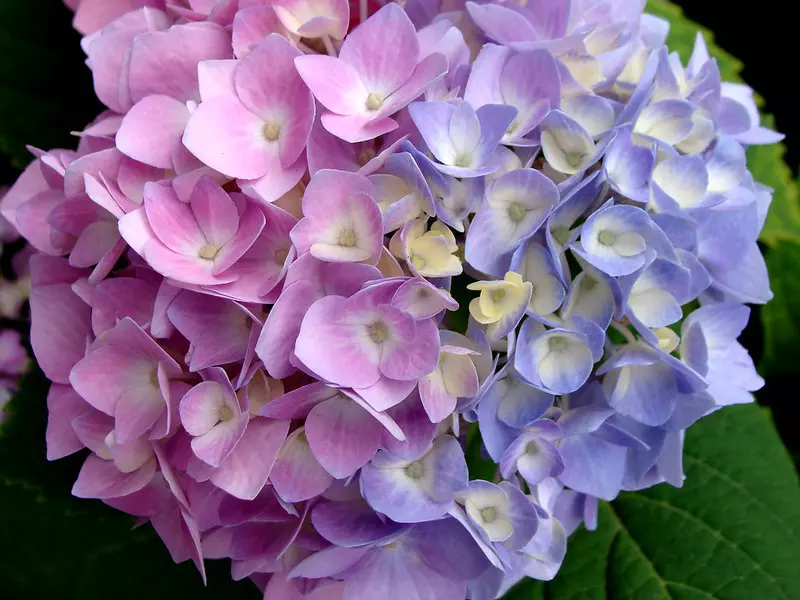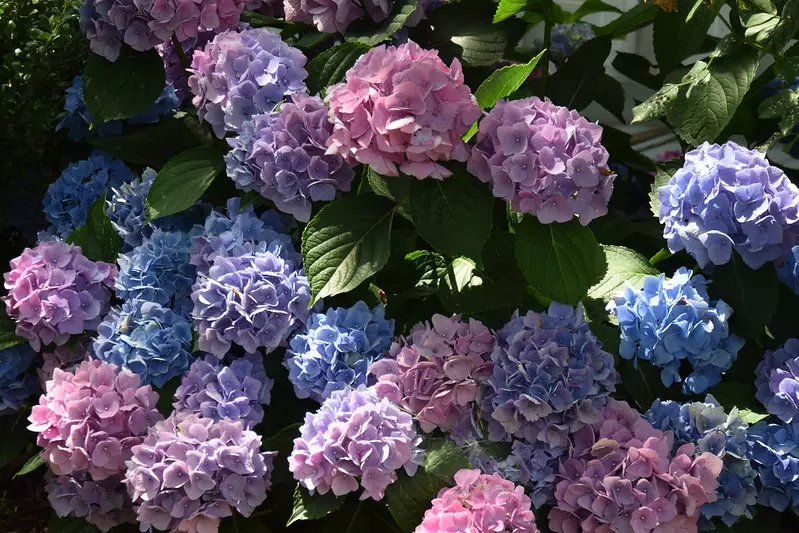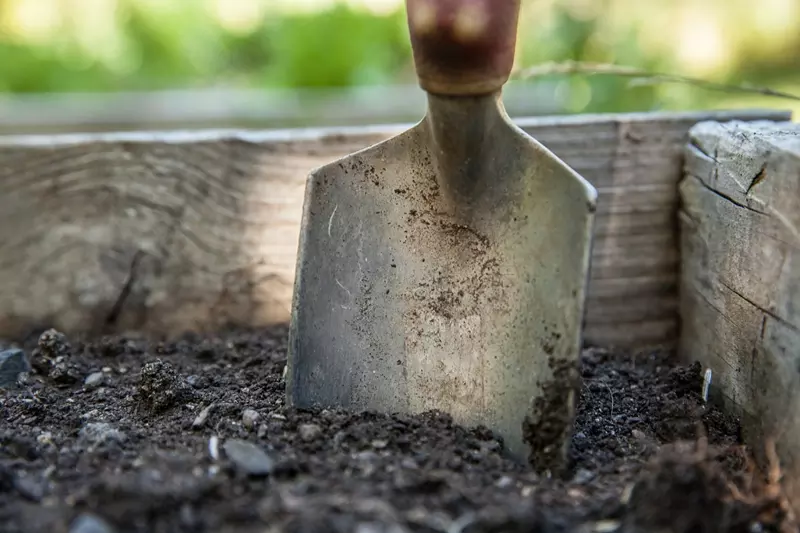
Hydrangea Colour Manipulation Techniques
Learn how to manipulate hydrangea flower colours through soil pH adjustments, aluminium availability, and proper fertilisation techniques.
Read MoreHydrangeas are unique plants with a fascinating ability to change the colour of their blooms based on the soil’s pH level. This guide explains how to naturally adjust the soil conditions to transform hydrangea blooms from pink to blue, or vice versa.

Soil pH measures the acidity or alkalinity of the soil, ranging from 0 (highly acidic) to 14 (highly alkaline), with 7 being neutral. This scale significantly influences plant nutrient availability and uptake.
Hydrangeas, particularly Hydrangea macrophylla varieties, exhibit a remarkable trait: their bloom colour changes in response to soil pH levels. This phenomenon is primarily due to the availability of aluminium ions in the soil, which is regulated by pH.
The colour transformation in hydrangea flowers is attributed to the interaction between aluminium ions and anthocyanins, the pigments responsible for flower coloration. In acidic soils, soluble aluminium binds with anthocyanins, forming complexes that manifest as blue hues. Conversely, in alkaline soils, the absence of available aluminium allows anthocyanins to display red or pink colours.
Gardeners can manipulate hydrangea bloom colours by adjusting soil pH:
It's important to note that white hydrangea varieties typically do not change colour in response to soil pH, as their pigmentation lacks the anthocyanins necessary for this transformation.
The interplay between soil pH and hydrangea bloom colour offers gardeners a unique opportunity to influence the aesthetic appeal of their plants. By understanding and managing soil pH, one can enjoy a spectrum of hydrangea colours, enhancing the beauty and diversity of the garden landscape.
To encourage blue hydrangea blooms, consider the following natural acidifying amendments:
To promote pink hydrangea blooms, consider these natural alkalising amendments:
When modifying soil pH naturally, follow these steps:
Modifying soil pH through natural methods is an effective way to influence hydrangea bloom colour. By understanding and applying appropriate organic amendments, gardeners can create optimal soil conditions, leading to vibrant and desired hydrangea hues.
Not all hydrangea species have blooms that change colour in response to soil pH. Primarily, Hydrangea macrophylla (bigleaf) and Hydrangea serrata (mountain) varieties exhibit this trait. Other species, such as Hydrangea paniculata (panicle) and Hydrangea arborescens (smooth), typically do not undergo colour changes based on soil acidity or alkalinity.
Accurate soil pH assessment is crucial before attempting to alter bloom colours. Utilise reliable soil testing kits or consult local agricultural extension services to determine current pH levels. Regular monitoring ensures that any amendments achieve the desired effect without adversely affecting plant health.
Altering soil pH should be approached gradually to prevent plant stress. Sudden changes can disrupt nutrient availability and harm the hydrangea. Implement soil amendments in small increments, allowing time for the plant to adapt and for the pH to stabilise.
While soil pH significantly influences hydrangea bloom colour, other environmental factors also play a role. Sunlight exposure, temperature variations, and soil composition can impact the intensity and hue of the flowers. For instance, hydrangeas in warmer climates may benefit from partial shade to prevent wilting.
Maintaining overall plant health is essential when attempting to change bloom colours. Ensure proper watering, fertilisation, and pruning practices are in place. Over-fertilisation, particularly with high phosphorus fertilisers, can hinder the plant's ability to absorb aluminium, affecting colour change. Additionally, hydrangeas require adequate sunlight—ideally four to six hours daily—for optimal growth and bloom production.
Changing hydrangea bloom colours is a gradual process that may take several growing seasons to achieve noticeable results. Patience is essential, as is maintaining realistic expectations. Some hydrangeas may not respond as dramatically as anticipated, and external factors can influence outcomes. It's also important to note that while blue and pink shades are more easily manipulated, white hydrangeas usually remain unaffected by soil pH changes.
Successfully altering the colour of hydrangea blooms through natural methods involves a comprehensive understanding of plant varieties, careful monitoring of soil pH, gradual implementation of changes, and consideration of environmental factors. By adhering to these important considerations, gardeners can enhance their chances of achieving the desired floral display while ensuring the health and vitality of their hydrangeas.
To preserve the preferred bloom colour, it's essential to monitor your soil's pH regularly. Use a reliable soil pH testing kit to check levels at least twice a year, preferably in early spring and late autumn. This practice ensures that any necessary adjustments can be made before the growing season begins.
Depending on your desired bloom colour, you can amend the soil naturally:
Hydrangeas require consistent moisture to thrive, but overwatering can lead to nutrient leaching, affecting soil pH and bloom colour. Water the plants deeply once or twice a week, depending on rainfall and soil drainage. Mulching with organic materials helps retain soil moisture and provides a buffer against pH fluctuations.
Proper pruning and seasonal care are vital for maintaining hydrangea health and bloom quality. Prune hydrangeas after flowering to remove spent blooms and dead or weak stems, promoting vigorous growth. Avoid heavy pruning in late autumn or winter, as this can remove flower buds for the next season.
Use fertilisers appropriate for the desired bloom colour. For blue blooms, select fertilisers low in phosphorus and high in potassium, as phosphorus can limit aluminium uptake. For pink blooms, a balanced fertiliser is suitable. Apply fertilisers in early spring and avoid over-fertilisation, which can lead to excessive foliage growth at the expense of blooms.
Environmental factors such as light exposure and temperature can influence bloom colour intensity. Plant hydrangeas in locations with morning sun and afternoon shade to protect them from harsh sunlight, which can cause colour fading. Additionally, protect plants from extreme temperatures by mulching in winter and providing adequate water during heatwaves.
Maintaining the desired hydrangea bloom colour over time involves regular soil pH monitoring, appropriate natural amendments, consistent watering, proper pruning, and mindful fertilisation. By attending to these factors, you can enjoy vibrant and consistent hydrangea blooms that enhance your garden's beauty year after year.
The colour of hydrangea blooms is influenced by soil pH:
Adjusting soil pH can be achieved through natural amendments, but it's essential to do so gradually to prevent plant stress.
To alter hydrangea bloom colour naturally, consider the following additives:
Maintaining hydrangea health during soil pH adjustments involves:
Altering hydrangea bloom colour through natural soil pH adjustments is achievable with careful management. By incorporating appropriate natural additives and maintaining overall plant health, you can enjoy vibrant hydrangea blooms in your preferred hues.
Not all hydrangea species respond to soil pH changes. Bigleaf hydrangeas (Hydrangea macrophylla) and mountain hydrangeas (Hydrangea serrata) are known for colour variability. Attempting to change the colour of non-responsive species can lead to frustration.
Altering bloom colour requires precise soil pH adjustments. Skipping soil testing can result in ineffective amendments. Regular soil pH testing guides appropriate interventions.
Over-application of soil amendments like aluminium sulphate or lime can harm plant health. It's essential to follow recommended dosages and apply treatments gradually to avoid root damage and nutrient imbalances.
Changing hydrangea bloom colour is a gradual process that can take several months to a year. Expecting immediate results may lead to unnecessary additional treatments, potentially stressing the plant.
Focusing solely on colour change without considering overall plant health can be detrimental. Proper watering, pruning, and fertilisation are crucial to support the plant during pH adjustments.
Hydrangea blooms naturally change colour as they age. Misinterpreting these natural shifts as pH-related changes can lead to unnecessary soil amendments. Understanding the plant's natural colour progression is essential.
Achieving the desired bloom colour requires consistent soil pH maintenance. Neglecting regular monitoring and adjustments can cause the plant to revert to its original colour. Establishing a maintenance routine is key to sustaining the desired hue.
Avoiding these common mistakes can enhance success in changing hydrangea bloom colours. By understanding species-specific responses, conducting regular soil tests, applying amendments judiciously, and maintaining overall plant health, gardeners can enjoy the desired floral displays in their landscapes.
Transforming hydrangea blooms naturally is an exciting and rewarding gardening practice. By carefully modifying the soil’s pH and using organic materials, you can achieve the desired flower colour while ensuring your plants remain healthy and thriving.

Learn how to manipulate hydrangea flower colours through soil pH adjustments, aluminium availability, and proper fertilisation techniques.
Read More
Discover the secrets to cultivating vibrant blue hydrangeas. Learn about soil preparation, planting techniques, and expert care tips for stunning blooms.
Read More
Discover the best soil for growing healthy hydrangeas. Learn how to create optimal soil conditions and maintain them for vibrant blooms.
Read More